Capacitive Load-Based Smart OTF for High Power Rated SPV Module
Abstract
:1. Introduction
2. Proposed Methods, Tools, and Technique for OTF
2.1. SPV Array
2.2. Sensors
2.2.1. Voltage Measurement
2.2.2. Current Measurement
2.2.3. Light Irradiance (G) Measurement
2.2.4. SPV Module Temperature Measurement
2.3. Electrical Load Unit
2.3.1. Capacitive Load
2.3.2. Discharge Circuitry
2.4. Data Acquisition and Computation (DAQC)
2.4.1. Data Logger
2.4.2. STC Correction
3. Results and Discussion
3.1. Outcomes of the Conventional Method (Resistive Load)
3.2. Outcomes of the Proposed Method (Capacitive Load)
3.3. Comparison of Resistive and Capacitive Load Method
4. Conclusions
Author Contributions
Funding
Acknowledgments
Conflicts of Interest
Abbreviations
| ADC | Analog to Digital Converter |
| AEC | Aluminium Electrolytic Capacitor |
| AHHS | Aluminium Housed Heat Sink |
| C | Capacitor Load in |
| CPU | Central Processing Unit |
| DAQC | Data Acquisition and Control |
| DMM | Digital Multi-meter |
| DUT | Device Under Test |
| EMC | Enhanced Monitoring and Control |
| ER | Electromagnetic Relays |
| ESR | Equivalent Series Resistance |
| FF | Fill Factor |
| G | Light Irradiance in W/m |
| Light Irradiance at STC in W/m | |
| GCPS | Grid Connected Photovoltaic System |
| GUI | Graphical User Interface |
| Maximum Current in | |
| Short Circuit Current in | |
| STC Corrected Current in | |
| IoT | Internet of Things |
| I–V | Current–Voltage |
| MPP | Maximum Power Point |
| NREL | National Renewable Energy Laboratory |
| OTF | Outdoor Test Facility |
| O&M | Operation and Maintenance |
| Maximum Power in | |
| PSC | Partial Shading Condition |
| PV | Photovoltaic |
| P–V | Power–Voltage |
| RAP | Remote Access Portal |
| RE | Renewable Energy |
| S1 | Switch 1 |
| S2 | Switch 2 |
| SPS | Sample Per Second |
| SPV | Solar Photovoltaic |
| STC | Standard Test Condition |
| Module Temperature | |
| Scan Time in | |
| Module Temperature at STC in | |
| Maximum Voltage in V | |
| Open Circuit Voltage in V | |
| STC corrected Voltage V | |
| Wi-Fi | Wireless Fidelity |
| VDC | Voltage Divider Circuit |
| Thermal coefficient of the open-circuit voltage in () | |
| Thermal coefficient of the short-circuit current in () | |
| Thermal coefficient of the Power in () |
References
- Sarkodie, S.A.; Strezov, V. Effect of foreign direct investments, economic development and energy consumption on greenhouse gas emissions in developing countries. Sci. Total Environ. 2019, 646, 862–871. [Google Scholar] [CrossRef]
- Faaij, A.P.; Domac, J. Emerging international bio-energy markets and opportunities for socio-economic development. Energy Sustain. Dev. 2006, 10, 7–19. [Google Scholar] [CrossRef] [Green Version]
- Yang, Y.; Campana, P.E.; Yan, J. Potential of unsubsidized distributed solar PV to replace coal-fired power plants, and profits classification in Chinese cities. Renew. Sustain. Energy Rev. 2020, 131, 109967. [Google Scholar] [CrossRef]
- Bayod-Rújula, A.A. Future development of the electricity systems with distributed generation. Energy 2009, 34, 377–383. [Google Scholar] [CrossRef]
- IRENA. Future of Solar Photovoltaic: Deployment, Investment, Technology, Grid Integration, and Socio-Economic Aspects; International Renewable Energy Agency: Abu Dhabi, UAE, 2019. [Google Scholar]
- Gür, T.M. Review of electrical energy storage technologies, materials and systems: Challenges and prospects for large-scale grid storage. Energy Environ. Sci. 2018, 11, 2696–2767. [Google Scholar] [CrossRef]
- Kumar, B.S.; Sudhakar, K. Performance evaluation of 10 MW grid connected solar photovoltaic power plant in India. Energy Rep. 2015, 1, 184–192. [Google Scholar] [CrossRef] [Green Version]
- Hosseini, S.E.; Wahid, M.A. Hydrogen from solar energy, a clean energy carrier from a sustainable source of energy. Int. J. Energy Res. 2020, 44, 4110–4131. [Google Scholar] [CrossRef]
- Hayat, M.B.; Ali, D.; Monyake, K.C.; Alagha, L.; Ahmed, N. Solar energy—A look into power generation, challenges, and a solar-powered future. Int. J. Energy Res. 2019, 43, 1049–1067. [Google Scholar] [CrossRef]
- Al-Shetwi, A.Q.; Sujod, M.Z. Grid-connected photovoltaic power plants: A review of the recent integration requirements in modern grid codes. Int. J. Energy Res. 2018, 42, 1849–1865. [Google Scholar] [CrossRef]
- Vasconcelos Sampaio, P.G.; Aguirre González, M.O.; Monteiro de Vasconcelos, R.; Santos, M.A.T.d.; Jácome Vidal, P.d.C.; Pereira, J.P.P.; Santi, E. Prospecting technologies for photovoltaic solar energy: Overview of its technical-commercial viability. Int. J. Energy Res. 2020, 44, 651–668. [Google Scholar] [CrossRef]
- Tsai, C.H.; Figueroa-Acevedo, A.; Boese, M.; Li, Y.; Mohan, N.; Okullo, J.; Heath, B.; Bakke, J. Challenges of planning for high renewable futures: Experience in the US midcontinent electricity market. Renew. Sustain. Energy Rev. 2020, 131, 109992. [Google Scholar] [CrossRef]
- Enaganti, P.K.; Dwivedi, P.K.; Srivastava, A.K.; Goel, S. Analysing consequence of solar irradiance on amorphous silicon solar cell in variable underwater environments. Int. J. Energy Res. 2020, 44, 4493–4504. [Google Scholar] [CrossRef]
- Patni, N.; Pillai, S.G.; Sharma, P. Effect of using betalain, anthocyanin and chlorophyll dyes together as a sensitizer on enhancing the efficiency of dye-sensitized solar cell. Int. J. Energy Res. 2020, 44, 10846–10859. [Google Scholar]
- Al-Nimr, M.A.; Kiwan, S.; Sharadga, H. Simulation of a novel hybrid solar photovoltaic/wind system to maintain the cell surface temperature and to generate electricity. Int. J. Energy Res. 2018, 42, 985–998. [Google Scholar] [CrossRef]
- Bhuvaneswari, P.; Balakumar, R.; Vaidehi, V.; Balamuralidhar, P. Solar energy harvesting for wireless sensor networks. In Proceedings of the IEEE 2009 First International Conference on Computational Intelligence, Communication Systems and Networks, Indore, India, 23–25 July 2009; pp. 57–61. [Google Scholar]
- Fang, H.; Wang, X.; Song, W. Technology selection for photovoltaic cell from sustainability perspective: An integrated approach. Renew. Energy 2020, 153, 1029–1041. [Google Scholar] [CrossRef]
- Data Platform. Available online: https://www.statista.com (accessed on 15 March 2020).
- Sayyad, J.K.; Nasikkar, P.S. An overview of methods used for outdoor performance characterisation of photovoltaic module string up to 10 kWp. Int. J. Instrum. Technol. 2019, 2, 114–134. [Google Scholar] [CrossRef]
- Duran, E.; Piliougine, M.; Sidrach-de Cardona, M.; Galán, J.; Andujar, J. Different methods to obtain the I–V curve of PV modules: A review. In Proceedings of the 2008 33rd IEEE Photovoltaic Specialists Conference, San Diego, CA, USA, 11–16 May 2008; pp. 1–6. [Google Scholar]
- Mu noz, J.; Lorenzo, E. Capacitive load based on IGBTs for on-site characterization of PV arrays. Sol. Energy 2006, 80, 1489–1497. [Google Scholar] [CrossRef] [Green Version]
- Mu noz, J.; Nofuentes, G.; Fuentes, M.; De la Casa, J.; Aguilera, J. DC energy yield prediction in large monocrystalline and polycrystalline PV plants: Time-domain integration of Osterwald’s model. Energy 2016, 114, 951–960. [Google Scholar] [CrossRef]
- Jordan, D.C.; Deline, C.; Deceglie, M.G.; Nag, A.; Kimball, G.M.; Shinn, A.B.; John, J.J.; Alnuaimi, A.A.; Elnosh, A.B.; Luo, W.; et al. Reducing interanalyst variability in photovoltaic degradation rate assessments. IEEE J. Photovolt. 2019, 10, 206–212. [Google Scholar] [CrossRef]
- Jordan, D.C.; Silverman, T.J.; Sekulic, B.; Kurtz, S.R. PV degradation curves: Non-linearities and failure modes. Prog. Photovolt. Res. Appl. 2017, 25, 583–591. [Google Scholar] [CrossRef] [Green Version]
- Jordan, D.C.; Kurtz, S.R.; VanSant, K.; Newmiller, J. Compendium of photovoltaic degradation rates. Prog. Photovolt. Res. Appl. 2016, 24, 978–989. [Google Scholar] [CrossRef]
- Huang, J.M.; Wai, R.J.; Gao, W. Newly-designed fault diagnostic method for solar photovoltaic generation system based on IV-curve measurement. IEEE Access 2019, 7, 70919–70932. [Google Scholar] [CrossRef]
- Rediske, G.; Siluk, J.C.M.; Gastaldo, N.G.; Rigo, P.D.; Rosa, C.B. Determinant factors in site selection for photovoltaic projects: A systematic review. Int. J. Energy Res. 2019, 43, 1689–1701. [Google Scholar] [CrossRef]
- Jiang, J.A.; Wang, J.C.; Kuo, K.C.; Su, Y.L.; Shieh, J.C. On evaluating the effects of the incident angle on the energy harvesting performance and MPP estimation of PV modules. Int. J. Energy Res. 2014, 38, 1304–1317. [Google Scholar] [CrossRef]
- Sayyad, J.K.; Nasikkar, P.S. Solar photovoltaic module performance characterisation using single diode modeling. In Proceedings of the 6th International Conference on Energy and City of the Future (EVF’2019), Pune, Maharashtra, India, 18–20 December 2019; Volume 170, p. 01023. [Google Scholar]
- Herman, M.; Jankovec, M.; Topič, M. Optimal IV curve scan time of solar cells and modules in light of irradiance level. Int. J. Photoenergy 2012, 1–11. [Google Scholar] [CrossRef] [Green Version]
- Polo, J.; Fernandez-Neira, W.; Alonso-García, M. On the use of reference modules as irradiance sensor for monitoring and modelling rooftop PV systems. Renew. Energy 2017, 106, 186–191. [Google Scholar] [CrossRef]
- Erkaya, Y.; Illa, H.S.; Conway, C.; Dhali, S.; Marsillac, S. Development of a string level fault detection system for solar tracking applications. In Proceedings of the 2014 IEEE 40th Photovoltaic Specialist Conference (PVSC), Denver, CO, USA, 8–13 June 2014; pp. 3100–3103. [Google Scholar]
- Hishikawa, Y.; Doi, T.; Higa, M.; Yamagoe, K.; Ohshima, H.; Takenouchi, T.; Yoshita, M. Voltage-Dependent Temperature Coefficient of the I–V Curves of Crystalline Silicon Photovoltaic Modules. IEEE J. Photovolt. 2018, 8, 48–53. [Google Scholar] [CrossRef]
- Nikoletatos, J.; Kyritsis, A. International Standards With Relevance to Photovoltaics. In McEvoy’s Handbook of Photovoltaics; Elsevier: Amsterdam, The Netherlands, 2018; pp. 1241–1248. [Google Scholar]
- Agroui, K. Indoor and outdoor characterizations of photovoltaic module based on mulicrystalline solar cells. Energy Procedia 2012, 18, 857–866. [Google Scholar] [CrossRef] [Green Version]
- Wohlgemuth, J.H. Standards for PV Modules and Components–Recent Developments and Challenges; Technical Report; National Renewable Energy Lab. (NREL): Golden, CO, USA, 2012.
- International Electrotechnical Commission. Standard IEC 60904-1: Photovoltaic Devices—Part 1: Measurement of Photovoltaic Current–Voltage Characteristics; IEC Central Office: Geneva, Switzerland, 2006. [Google Scholar]
- Ya’acob, M.E.; Hizam, H.; Radzi, M.A.M.; Kadir, M. Field measurement of PV array temperature for tracking and concentrating 1 k generators installed in Malaysia. Int. J. Photoenergy 2013, 1–8. [Google Scholar] [CrossRef]
- Fesharaki, V.J.; Dehghani, M.; Fesharaki, J.J.; Tavasoli, H. The effect of temperature on photovoltaic cell efficiency. In Proceedings of the 1st International Conference on Emerging Trends in Energy Conservation–ETEC, Tehran, Iran, 20–21 November 2011; pp. 1–6. [Google Scholar]
- Zhu, Y.; Xiao, W. A comprehensive review of topologies for photovoltaic I–V curve tracer. Sol. Energy 2020, 196, 346–357. [Google Scholar] [CrossRef]
- Leite, V.; Chenlo, F. An improved electronic circuit for tracing the IV characteristics of photovoltaic modules and strings. In Proceedings of the International Conference on Renewable Energies and Power Quality (ICREPQ’10), Granada, Espanha, 23–25 March 2010. [Google Scholar]
- Amiry, H.; Benhmida, M.; Bendaoud, R.; Hajjaj, C.; Bounouar, S.; Yadir, S.; Raïs, K.; Sidki, M. Design and implementation of a photovoltaic IV curve tracer: Solar modules characterization under real operating conditions. Energy Convers. Manag. 2018, 169, 206–216. [Google Scholar] [CrossRef]
- Sayyad, J.K.; Nasikkar, P.S. Capacitor Load Based I–V Curve Tracer for Performance Characterisation of the Solar Photovoltaic System. Appl. Sol. Energy 2020, 56, 168–177. [Google Scholar] [CrossRef]
- Leite, V.; Batista, J.; Chenlo, F.; Afonso, J.L. Low-cost IV tracer for photovoltaic modules and strings. In Proceedings of the IEEE 2014 International Symposium on Power Electronics, Electrical Drives, Automation and Motion, Ischia, Italy, 18–20 June 2014; pp. 971–976. [Google Scholar]
- Cáceres, M.; Firman, A.; Montes-Romero, J.; González Mayans, A.R.; Vera, L.H.; Fernández, E.F.; de la Casa Higueras, J. Low-Cost I–V Tracer for PV Modules under Real Operating Conditions. Energies 2020, 13, 4320. [Google Scholar] [CrossRef]
- Spertino, F.; Ahmad, J.; Ciocia, A.; Di Leo, P.; Murtaza, A.F.; Chiaberge, M. Capacitor charging method for I–V curve tracer and MPPT in photovoltaic systems. Sol. Energy 2015, 119, 461–473. [Google Scholar] [CrossRef] [Green Version]
- Warner, T.; Cox, C., III. A high power current-voltage curve tracer employing a capacitive load. Sol. Cells 1982, 7, 175–181. [Google Scholar] [CrossRef]
- Skoplaki, E.; Palyvos, J.A. On the temperature dependence of photovoltaic module electrical performance: A review of efficiency/power correlations. Sol. Energy 2009, 83, 614–624. [Google Scholar] [CrossRef]
- Erkaya, Y.; Moses, P.; Marsillac, S. On-site characterization of PV modules using a portable, MOSFET-based capacitive load. In Proceedings of the 2016 IEEE 43rd Photovoltaic Specialists Conference (PVSC), Portland, OR, USA, 5–10 June 2016; pp. 3119–3122. [Google Scholar]
- Dash, P.; Gupta, N. Effect of temperature on power output from different commercially available photovoltaic modules. Int. J. Eng. Res. Appl. 2015, 5, 148–151. [Google Scholar]
- Spataru, S.; Hacke, P.; Sera, D.; Packard, C.; Kerekes, T.; Teodorescu, R. Temperature-dependency analysis and correction methods of in situ power-loss estimation for crystalline silicon modules undergoing potential-induced degradation stress testing. Prog. Photovolt. Res. Appl. 2015, 23, 1536–1549. [Google Scholar] [CrossRef]
- Van Dyk, E.; Gxasheka, A.; Meyer, E. Monitoring current–voltage characteristics and energy output of silicon photovoltaic modules. Renew. Energy 2005, 30, 399–411. [Google Scholar] [CrossRef]
- Malik, A.; Damit, S.J.B.H. Outdoor testing of single crystal silicon solar cells. Renew. Energy 2003, 28, 1433–1445. [Google Scholar] [CrossRef]
- Willoughby, A.; Omotosho, T.; Aizebeokhai, A. A simple resistive load IV curve tracer for monitoring photovoltaic module characteristics. In Proceedings of the 2014 5th International Renewable Energy Congress (IREC), Hammamet, Tunisia, 25–27 March 2014; pp. 1–6. [Google Scholar]
- Papageorgasa, P.; Piromalisb, D.; Valavanisa, T.; Kambasisa, S.; Iliopouloua, T.; Vokasa, G. A low-cost and fast PV IV curve tracer based on an open source platform with M2M communication capabilities for preventive monitoring. Energy Procedia 2015, 74, 423–438. [Google Scholar] [CrossRef] [Green Version]
- Riley, C.; Tolbert, L. An online autonomous i–v tracer for pv monitoring applications. In Proceedings of the 2015 IEEE Power & Energy Society General Meeting, Denver, CO, USA, 26–30 July 2015; pp. 1–5. [Google Scholar]

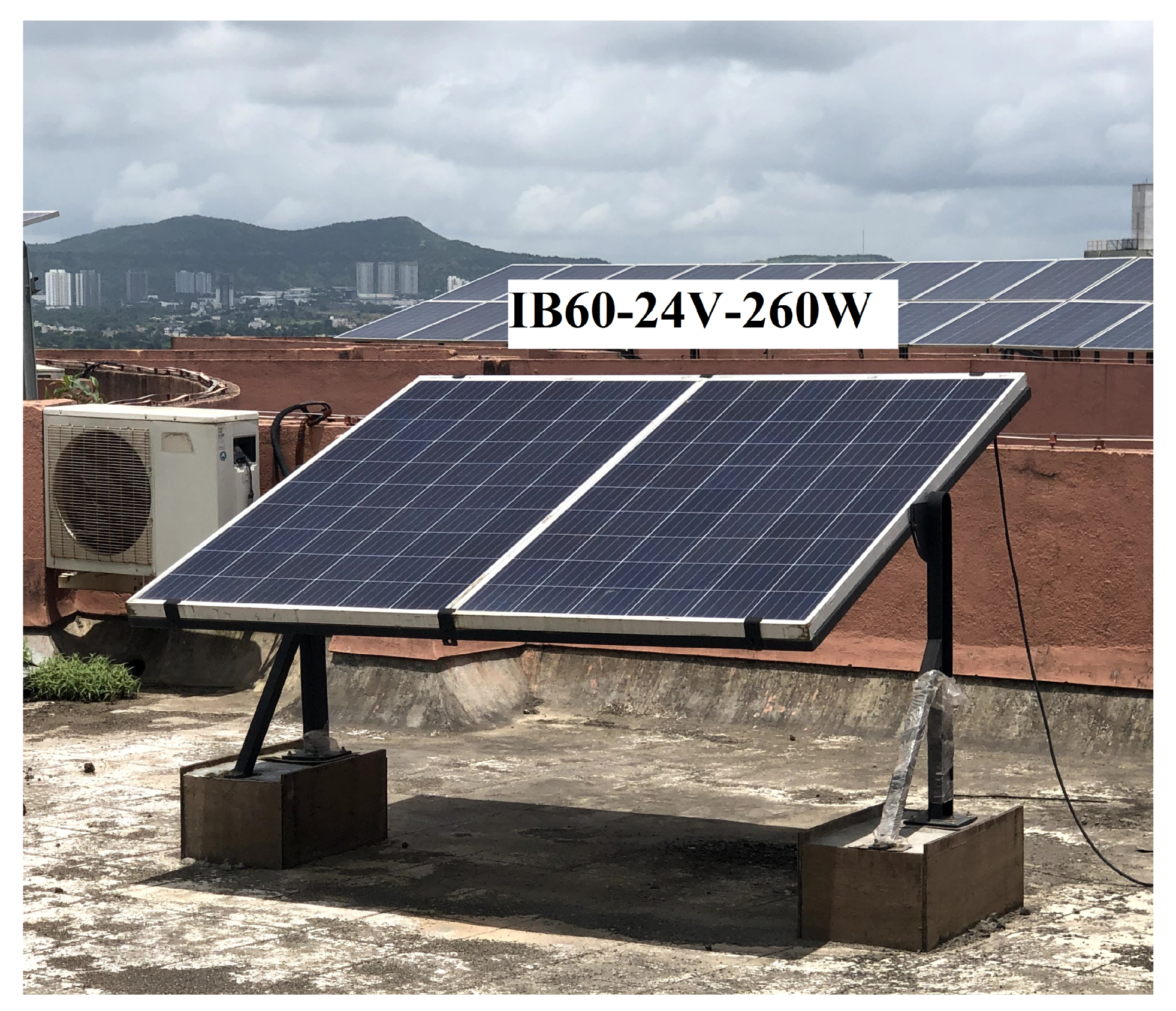
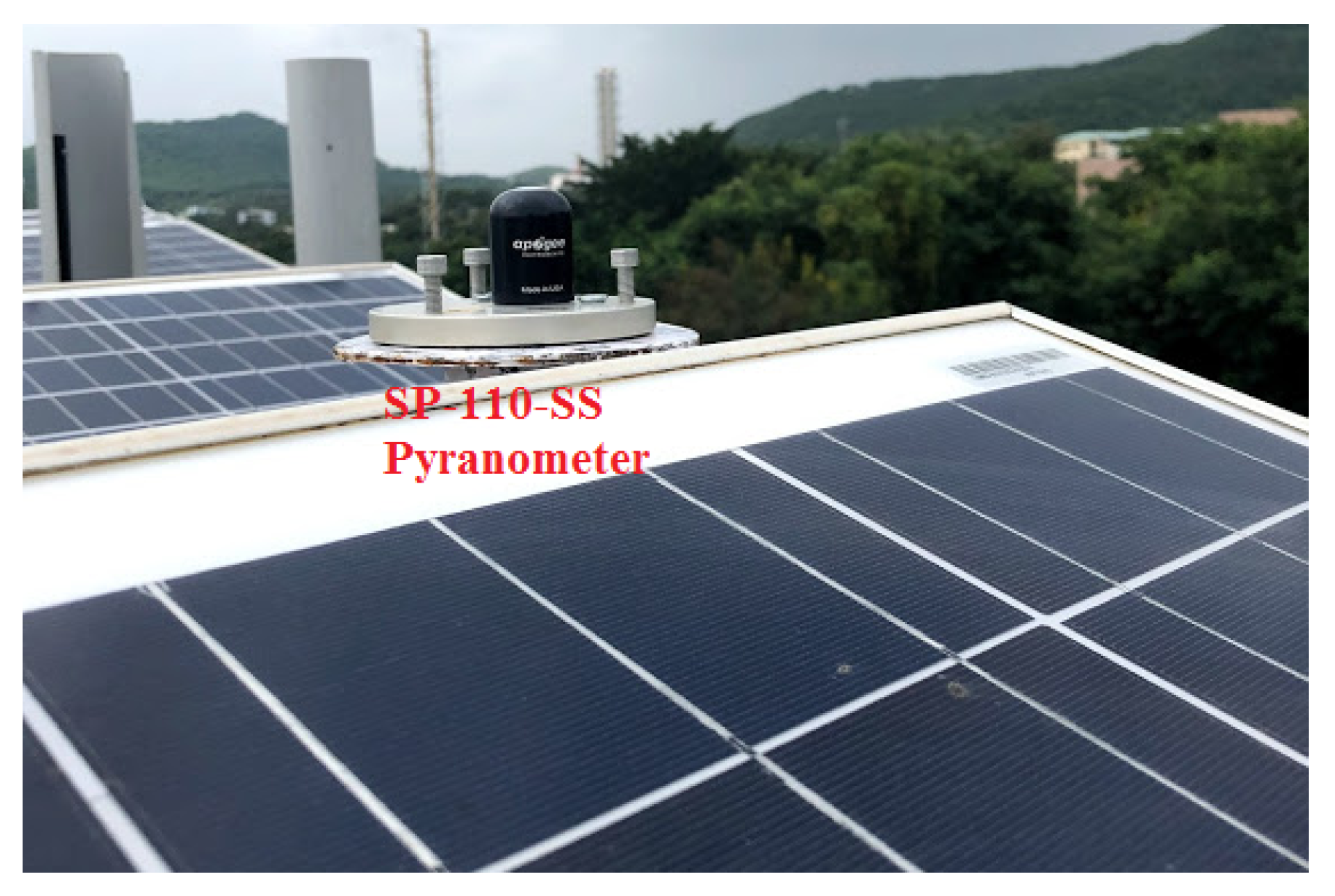
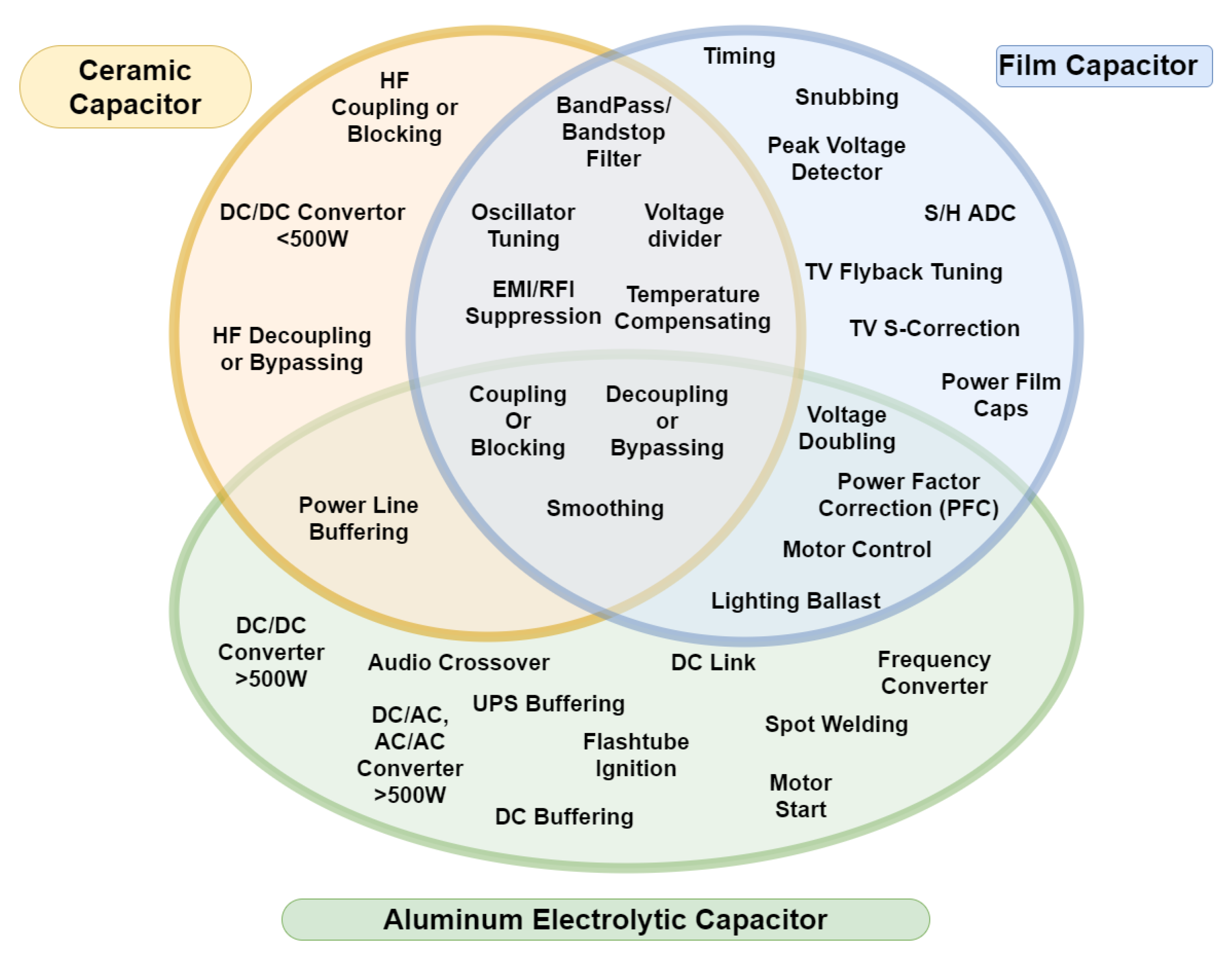

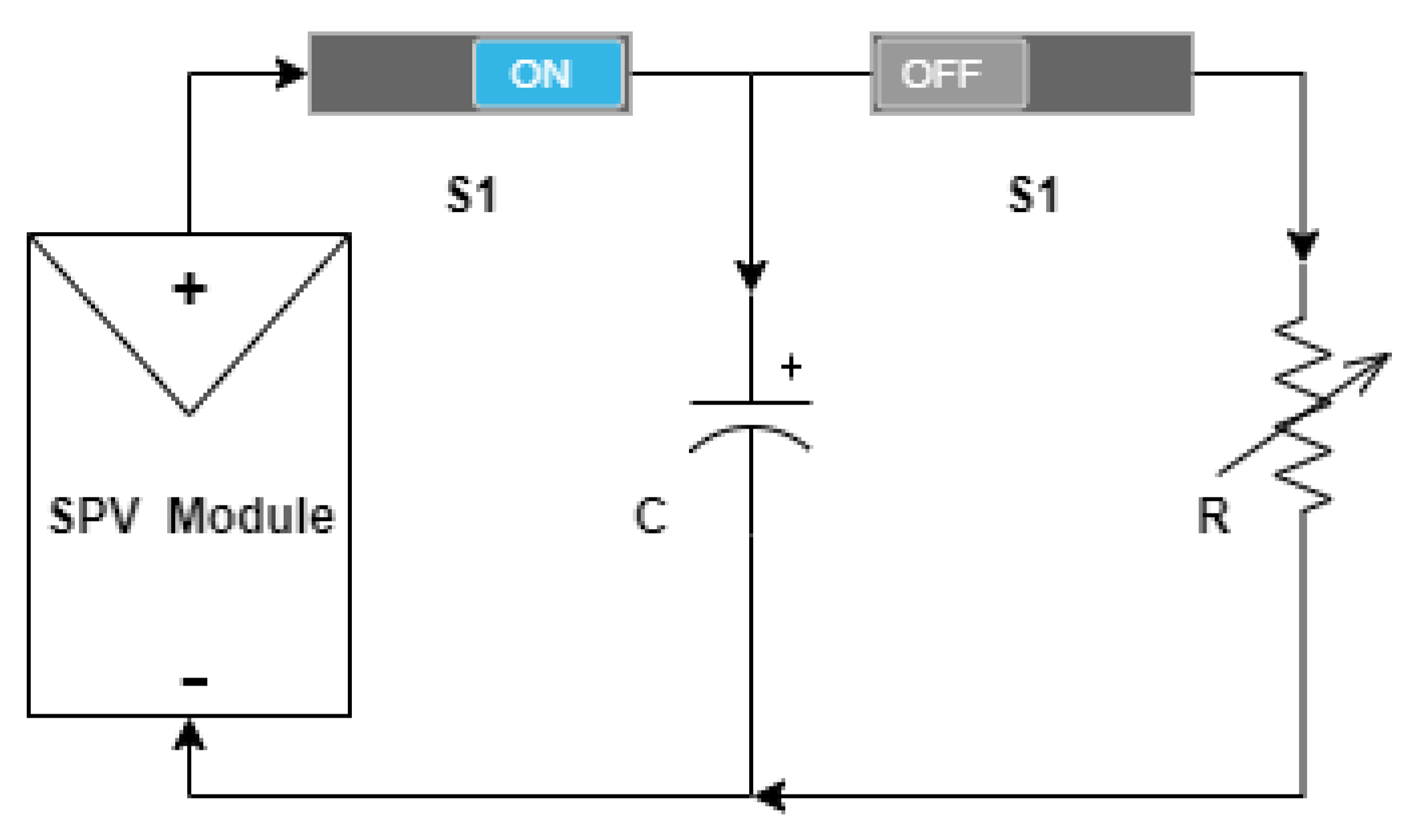
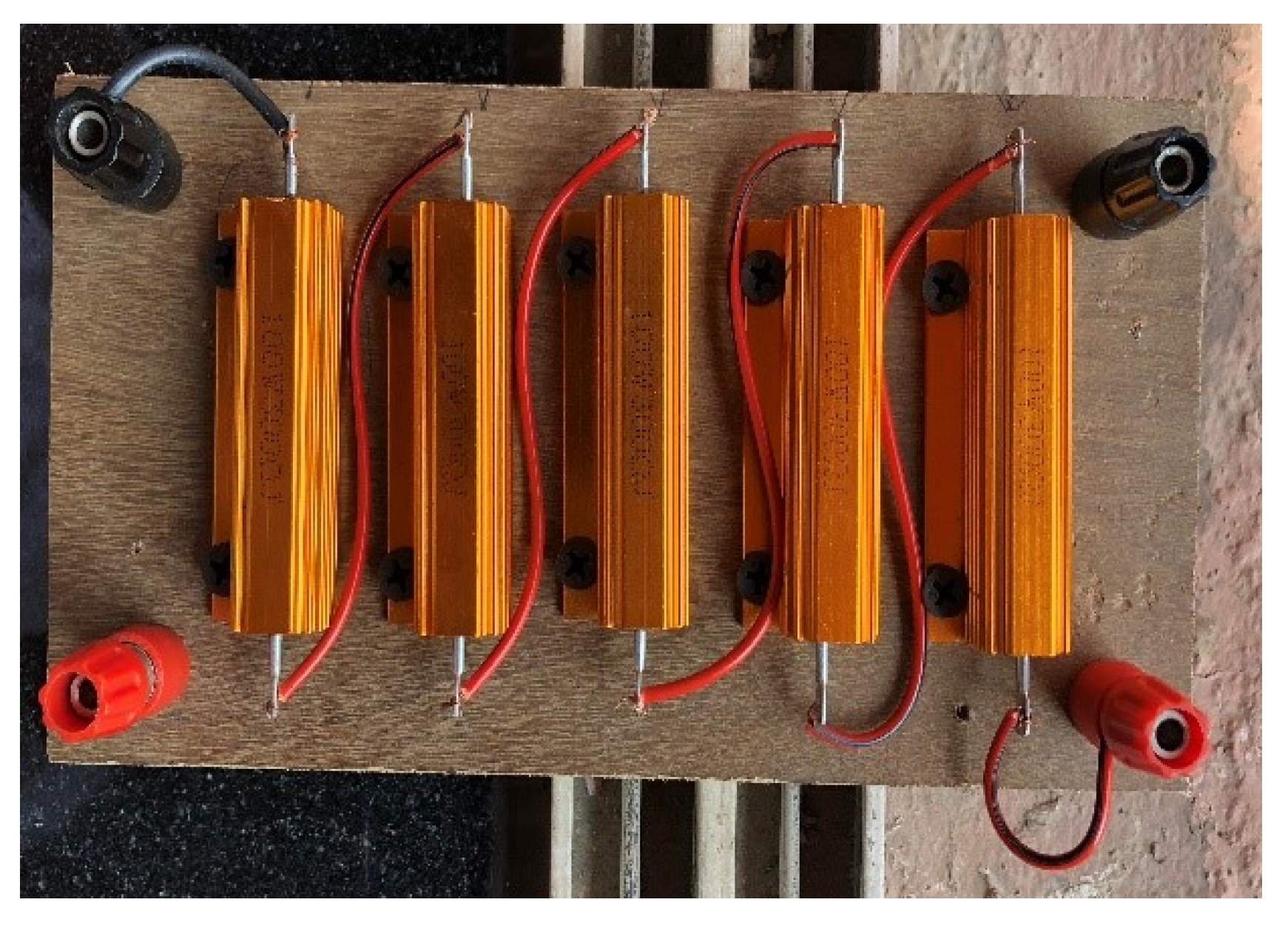
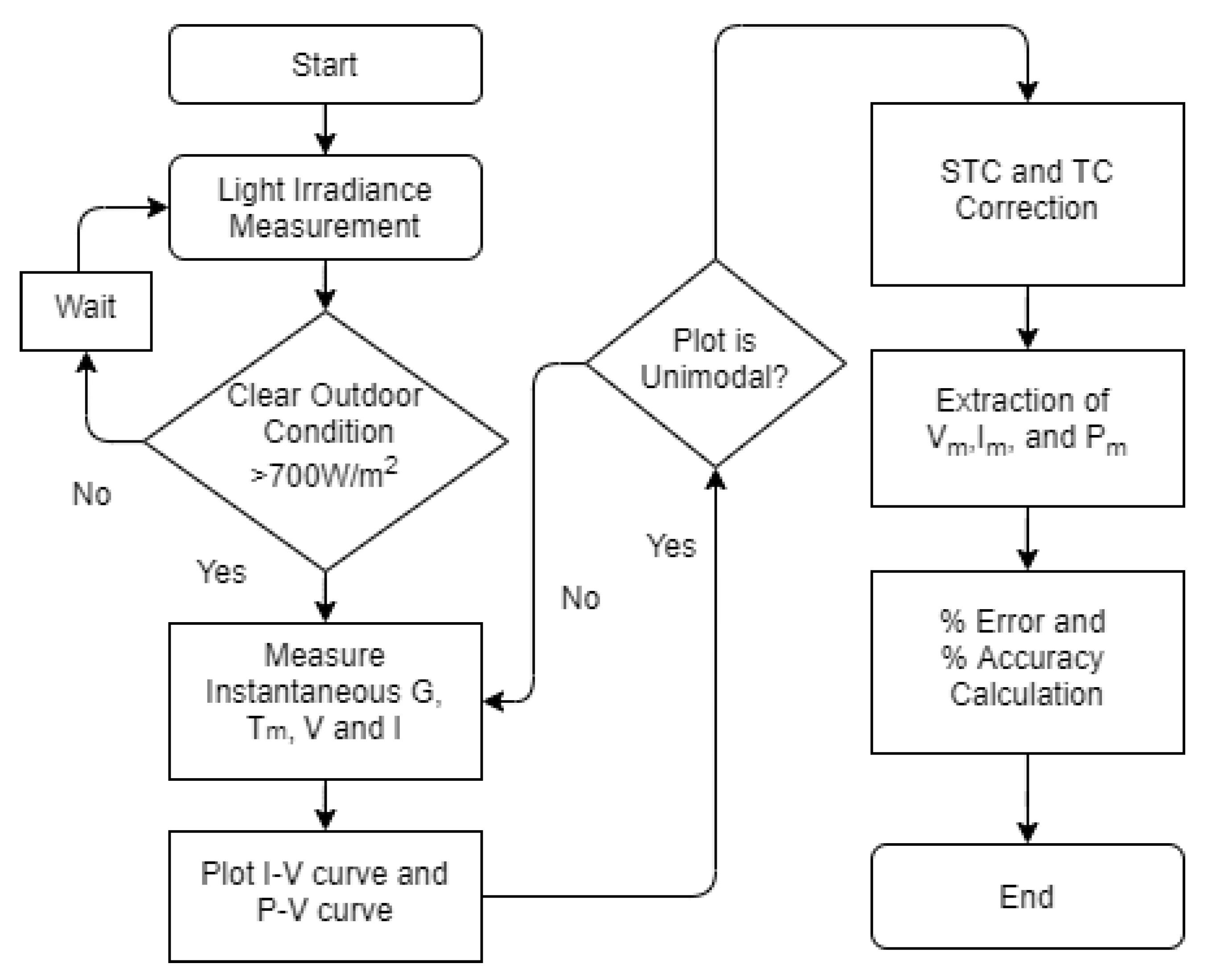
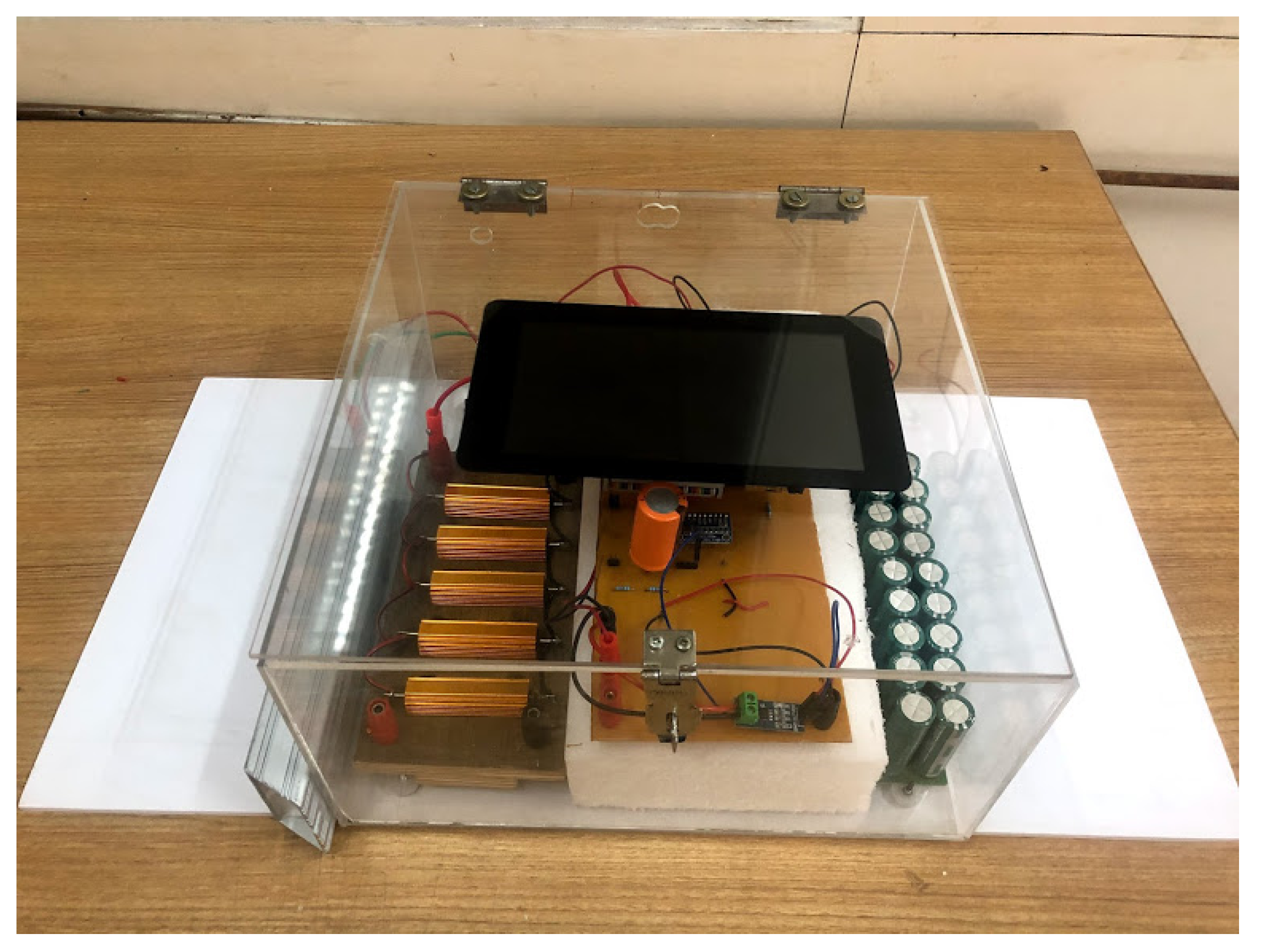

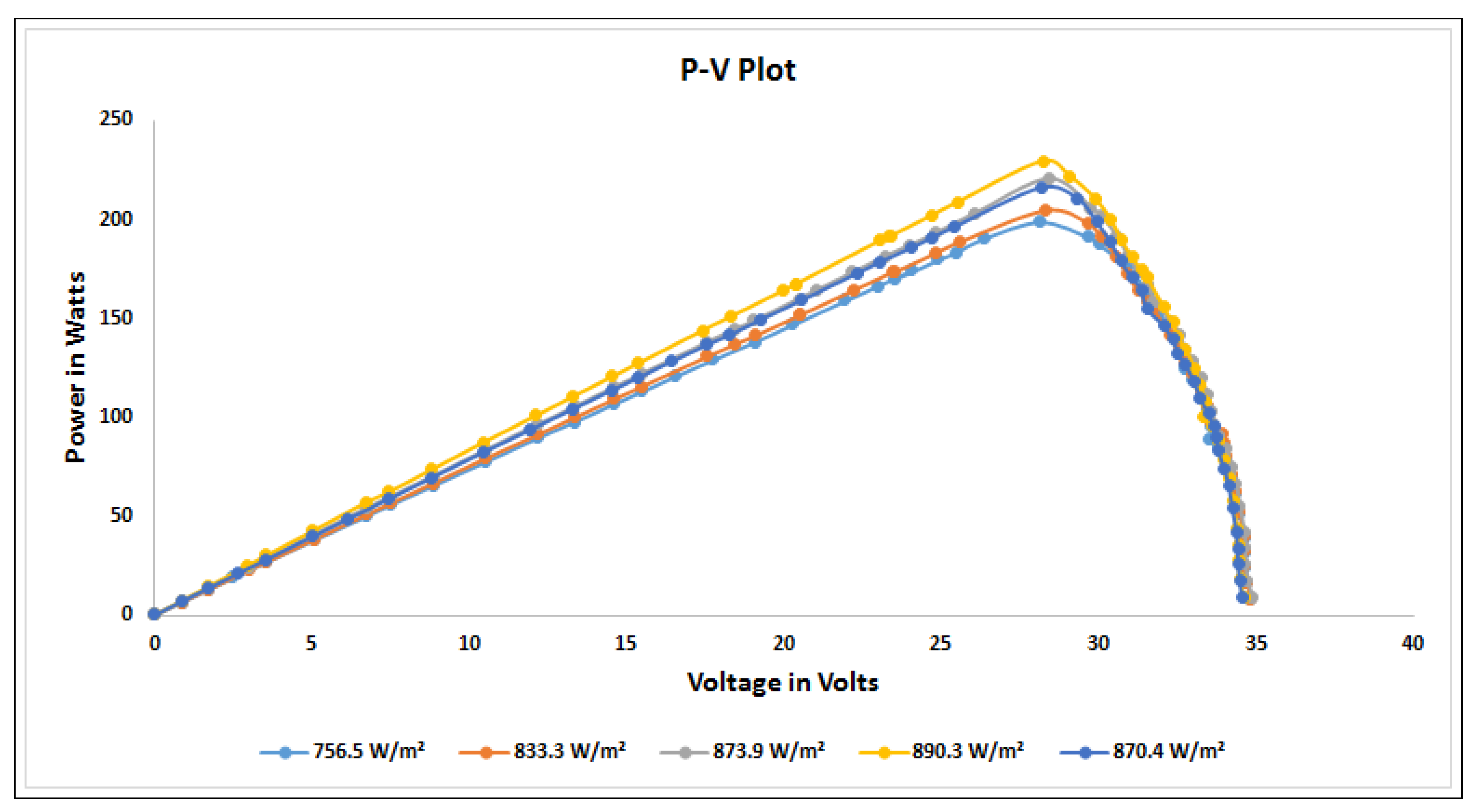
| On-Site Location Details | |
| Plant Location | SIT, Pune, India |
| Module Make | Integrated Batteries India Pvt. Ltd. |
| Model | IB60-24V-260W |
| Type of Module | Mono-crystalline |
| Module Wattage | 260 |
| Tilt Angle | 18 |
| Azimuth | 180 (Facing South) |
| Installation Type | Roof Top Mount |
| Latitude | 183227.9 N |
| Longitude | 734343.2 E |
| Electrical Data at STC | |
| 30.72 V | |
| 8.48 A | |
| 37.50 V | |
| 8.97 A | |
| 260 | |
| Efficiency | 16.01 (%) |
| Temperature Coefficients | |
| −0.31 (C) | |
| 0.0402 (C) | |
| −0.426 (C) | |
| Mechanical Data | |
| Dimension (L × W × H) mm | 1335 × 987 × 40 |
| G (W/m) | (C) | |||||||
|---|---|---|---|---|---|---|---|---|
| STC Specification | 1000 | 25 | Reference (A) | 37.7 | 30.9 | 8.89 | 8.42 | 260.18 |
| 11:00 A.M. | 756.5 | 46.5 | Measured | 33.51 | 26.81 | 6.78 | 6.24 | 169 |
| STC Corrected (B) | 35.75 | 28.6 | 6.86 | 6.31 | 180.47 | |||
| Absolute Error [] | 1.95 | 2.3 | 2.03 | 2.11 | 79.71 | |||
| Relative Error [] | 0.052 | 0.074 | 0.228 | 0.251 | 0.306 | |||
| % Accuracy [] | 94.8 | 92.6 | 77.2 | 74.9 | 69.4 | |||
| 12:00 P.M. | 833.3 | 48.8 | Measured | 33.79 | 27.03 | 6.89 | 6.34 | 171.37 |
| STC Corrected (B) | 36.29 | 29.03 | 6.97 | 6.41 | 186.08 | |||
| Absolute Error [] | 1.41 | 1.87 | 1.92 | 2.01 | 74.1 | |||
| Relative Error [] | 0.037 | 0.061 | 0.216 | 0.239 | 0.285 | |||
| % Accuracy [] | 96.3 | 93.9 | 78.4 | 76.1 | 71.5 | |||
| 01:00 P.M. | 873.9 | 49.5 | Measured | 34.18 | 27.69 | 7.04 | 6.48 | 179.43 |
| STC Corrected (B) | 36.78 | 29.79 | 7.12 | 6.55 | 195.12 | |||
| Absolute Error [] | 0.92 | 1.11 | 1.77 | 1.87 | 65.06 | |||
| Relative Error [] | 0.024 | 0.036 | 0.199 | 0.222 | 0.25 | |||
| % Accuracy [] | 97.6 | 96.4 | 80.1 | 77.8 | 75 | |||
| 02:00 P.M. | 890.3 | 50.7 | Measured | 34.23 | 27.9 | 7.29 | 6.71 | 187.21 |
| STC Corrected (B) | 36.96 | 30.12 | 7.37 | 6.79 | 204.51 | |||
| Absolute Error [] | 0.74 | 0.78 | 1.52 | 1.63 | 55.67 | |||
| Relative Error [] | 0.02 | 0.025 | 0.171 | 0.194 | 0.214 | |||
| % Accuracy [] | 98 | 97.5 | 82.9 | 80.6 | 78.6 | |||
| 03:00 P.M. | 870.4 | 51.3 | Measured | 34.13 | 27.3 | 6.95 | 6.39 | 174.45 |
| STC Corrected (B) | 36.91 | 29.53 | 7.03 | 6.47 | 191.06 | |||
| Absolute Error [] | 0.79 | 1.37 | 1.86 | 1.95 | 69.12 | |||
| Relative Error [] | 0.021 | 0.044 | 0.209 | 0.232 | 0.266 | |||
| % Accuracy [] | 97.9 | 95.6 | 79.1 | 76.8 | 73.4 |
| Capacitor used in OTF | 5.5 F, 48.6 V |
| Data Rate of ADC | 128 SPS |
| Data points of Current | 1500 Points |
| Data points of Voltage | 1500 Points |
| Total data points logged | 3000 Points |
| Calculated DAQ time for ADC | 23.4375 s |
| Actual/Measured DAQ time | 28.2767 s |
| (Volts)/(Amps) Ratio | 4.24 |
| by calculated using Equation (1) | 23.32 s |
| Capacitor Used in OTF | Equivalent Capacitance Value | Voltage Rating of Capacitor Used in OTF Hardware (V) | |
|---|---|---|---|
| IB60-24V-260W | |||
| 2200 uF | 2200 uF | 50 V | 9.32 ms |
| 4700 uF | 4700 uF | 50 V | 19.93 ms |
| 4700 uF × 2 (series) | 2350 uF | 50 V | 9.96 ms |
| 4700 uF × 2 (parallel) | 9400 uF | 50 V | 39.86 ms |
| 4700 uF × 2 × 2 (series and parallel) | 4700 uF | 50 V | 19.93 ms |
| 5.5 F Super capacitor | 5.5 F | 48.6 V | 23.32 s |
| G (W/m) | (C) | |||||||
|---|---|---|---|---|---|---|---|---|
| STC Specification | 1000 | 25 | Reference (A) | 37.7 | 30.9 | 8.89 | 8.42 | 260.18 |
| 11:00 A.M. | 756.5 | 46.5 | Measured | 34.82 | 28.14 | 7.59 | 7.07 | 198.95 |
| STC Corrected (B) | 37.14 | 30.02 | 7.68 | 7.15 | 214.64 | |||
| Absolute Error [] | 0.56 | 0.88 | 1.21 | 1.27 | 45.54 | |||
| Relative Error [] | 0.015 | 0.028 | 0.136 | 0.151 | 0.175 | |||
| % Accuracy [] | 98.5 | 97.2 | 86.4 | 84.9 | 82.5 | |||
| 12:00 P.M. | 833.3 | 48.8 | Measured | 34.84 | 28.33 | 7.75 | 7.24 | 205.11 |
| STC Corrected (B) | 37.41 | 30.42 | 7.84 | 7.32 | 222.67 | |||
| Absolute Error [] | 0.29 | 0.48 | 1.05 | 1.1 | 37.51 | |||
| Relative Error [] | 0.008 | 0.016 | 0.118 | 0.131 | 0.144 | |||
| % Accuracy [] | 99.2 | 98.4 | 88.2 | 86.9 | 85.6 | |||
| 01:00 P.M. | 873.9 | 49.5 | Measured | 34.88 | 28.41 | 8.19 | 7.76 | 220.46 |
| STC Corrected (B) | 37.53 | 30.57 | 8.28 | 7.85 | 239.97 | |||
| Absolute Error [] | 0.17 | 0.33 | 0.61 | 0.57 | 20.21 | |||
| Relative Error [] | 0.005 | 0.011 | 0.069 | 0.068 | 0.078 | |||
| % Accuracy [] | 99.5 | 98.9 | 93.1 | 93.2 | 92.2 | |||
| 02:00 P.M. | 890.3 | 50.7 | Measured | 34.62 | 28.24 | 8.61 | 8.13 | 229.59 |
| STC Corrected (B) | 37.38 | 30.49 | 8.71 | 8.22 | 250.63 | |||
| Absolute Error [] | 0.32 | 0.41 | 0.18 | 0.2 | 9.55 | |||
| Relative Error [] | 0.008 | 0.013 | 0.02 | 0.024 | 0.037 | |||
| % Accuracy [] | 99.2 | 98.7 | 98 | 97.6 | 96.3 | |||
| 03:00 P.M. | 870.4 | 51.3 | Measured | 34.57 | 28.19 | 8.11 | 7.67 | 216.22 |
| STC Corrected (B) | 37.39 | 30.49 | 8.21 | 7.76 | 236.6 | |||
| Absolute Error [] | 0.31 | 0.41 | 0.68 | 0.66 | 23.58 | |||
| Relative Error [] | 0.008 | 0.013 | 0.076 | 0.078 | 0.091 | |||
| % Accuracy [] | 99.2 | 98.7 | 92.4 | 92.2 | 90.9 |
Publisher’s Note: MDPI stays neutral with regard to jurisdictional claims in published maps and institutional affiliations. |
© 2021 by the authors. Licensee MDPI, Basel, Switzerland. This article is an open access article distributed under the terms and conditions of the Creative Commons Attribution (CC BY) license (http://creativecommons.org/licenses/by/4.0/).
Share and Cite
Sayyad, J.; Nasikkar, P.; Singh, A.P.; Ozana, S. Capacitive Load-Based Smart OTF for High Power Rated SPV Module. Energies 2021, 14, 788. https://doi.org/10.3390/en14030788
Sayyad J, Nasikkar P, Singh AP, Ozana S. Capacitive Load-Based Smart OTF for High Power Rated SPV Module. Energies. 2021; 14(3):788. https://doi.org/10.3390/en14030788
Chicago/Turabian StyleSayyad, Javed, Paresh Nasikkar, Abhaya Pal Singh, and Stepan Ozana. 2021. "Capacitive Load-Based Smart OTF for High Power Rated SPV Module" Energies 14, no. 3: 788. https://doi.org/10.3390/en14030788
APA StyleSayyad, J., Nasikkar, P., Singh, A. P., & Ozana, S. (2021). Capacitive Load-Based Smart OTF for High Power Rated SPV Module. Energies, 14(3), 788. https://doi.org/10.3390/en14030788








